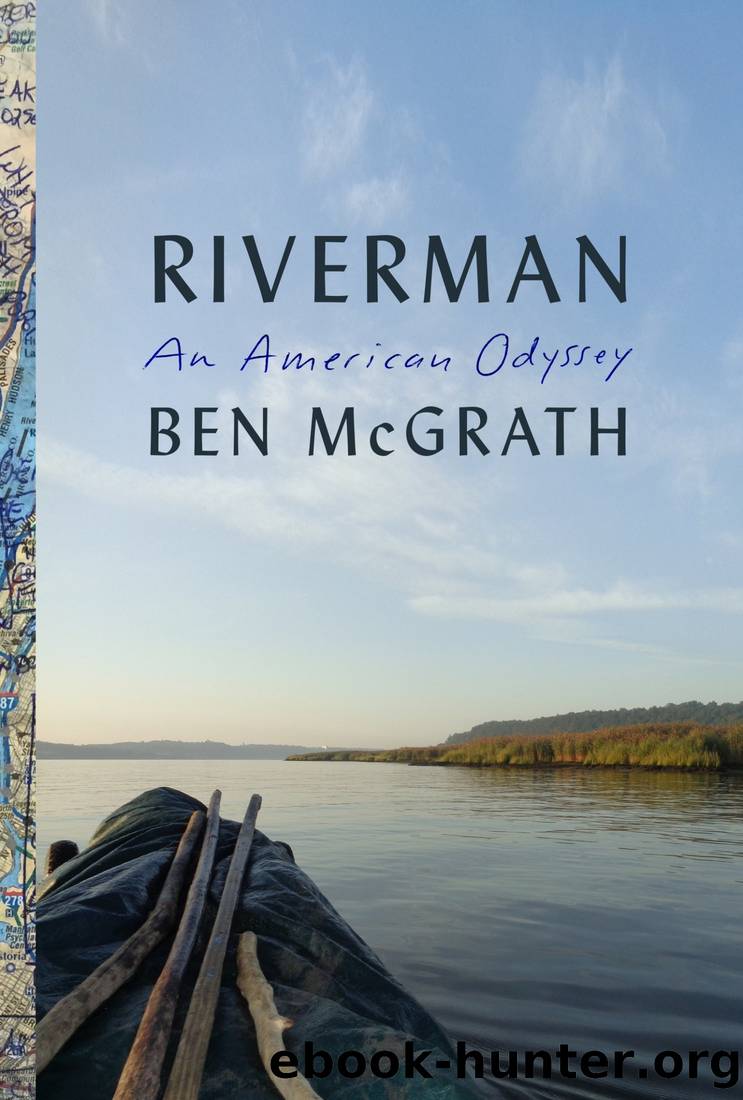Riverman: An American Odyssey by Ben McGrath

Author:Ben McGrath [McGrath, Ben]
Language: eng
Format: epub
Published: 2022-04-05T00:00:00+00:00
* * *
â
Canoeing, for some, is also an athletic pursuit, however ungainly. A columnist for Sports Illustrated, thinking recreation rather than exploration, once described it as âthe most inadvisable means ever conceived for the transportation of man by his own efforts.â Unlike rowing, say, which âdrives a boat as straight as a bricklayer heading for a saloon,â paddling with a single blade, side to side, leaves a vessel zigzagging like a bricklayer leaving one. âThat off-center body twisting and straining is man-killing. An AAU official has said that the nearest a man can come to the pangs of childbirth is the twisting and wrenching of competition walking, but heâs wrong. The agony of paddling against a headwind is like giving birth to cement blocks.â
Yet there are Guinness-certified records regarding the endeavor-as-sport, and a postliterary coda can be found in the example of Verlen Kruger, who is said to have canoed more than a hundred thousand miles in a forty-one-year span that included his early retirement from a plumbing career in Lansing, Michigan. He died of pancreatic cancer in 2004, at the age of eighty-two. When he was seventy-nine, he won a tandem race down the Mississippi, completing the river (with a friend) in just twenty-four days. At eighty, he canoed the length of the Yukon. His pièce de résistance was what he called the Ultimate Canoe Challenge, which began in 1980, in Red Rock, Montana, near the primary sourceâthe âutmostâ source, completists would call itâof the Missouri River, and concluded, about twenty-eight thousand miles and six hundred portages later, in December of 1983.
He had a partner, an exâNavy SEAL named Steve Landick, who also happened to be his son-in-law. (He had nine kids.) They used separate canoes, which Kruger designed, and which looked more like sea kayaks, with rudders and zippered spray covers. Sometimesâfor instance, while trying to set a speed record for descending the Missouriâthey rigged the boats together, like a catamaran, so that one could sleep while the other paddled. âAll meals are like filling a tank, and every meal we eat until we fill up,â Kruger wrote in his journal.
After the Missouri, they followed the Great Lakes and the St. Lawrence to the Bay of Fundy, and began a long run down the Atlantic Seaboard, to Key West, and on around into the Gulf. Then, in just eighty-three days, they went up the entire Mississippi, believing themselves to be (âas far as weâve been able to find outâ) sea-to-source pioneers on the Father of Waters. They continued on up into the Arctic. Along the way, they acquired sponsors: Dow Chemical, DuPont, Johnson Wax, Gore-Tex.
Kruger, then sixty, fell overboard in the Pacific, near Cape Blanco, Oregon, while heading south, and was rescued after an hour and a half by a Coast Guard helicopter. (Unlike Conant, they were traveling with EPIRBs, emergency position-indicating radio beacons.) Medics recorded his body temperature at ninety-one degrees. DuPont offered a two-thousand-dollar reward for Krugerâs canoe, which was eventually found by a fisherman, eighty miles south.
Download
This site does not store any files on its server. We only index and link to content provided by other sites. Please contact the content providers to delete copyright contents if any and email us, we'll remove relevant links or contents immediately.
Machine Learning at Scale with H2O by Gregory Keys | David Whiting(4258)
Never by Ken Follett(3882)
Harry Potter and the Goblet Of Fire by J.K. Rowling(3808)
Unfinished: A Memoir by Priyanka Chopra Jonas(3356)
Fairy Tale by Stephen King(3307)
The Man Who Died Twice by Richard Osman(3040)
Will by Will Smith(2872)
Rationality by Steven Pinker(2327)
The Dark Hours by Michael Connelly(2280)
Can't Hurt Me: Master Your Mind and Defy the Odds - Clean Edition by David Goggins(2276)
It Starts With Us (It Ends with Us #2) by Colleen Hoover(2255)
The Storyteller by Dave Grohl(2198)
Friends, Lovers, and the Big Terrible Thing by Matthew Perry(2182)
The Dawn of Everything: A New History of Humanity by David Graeber & David Wengrow(2156)
The Becoming by Nora Roberts(2150)
The Stranger in the Lifeboat by Mitch Albom(2093)
Cloud Cuckoo Land by Anthony Doerr(2058)
Love on the Brain by Ali Hazelwood(2024)
Einstein: His Life and Universe by Walter Isaacson(1985)
